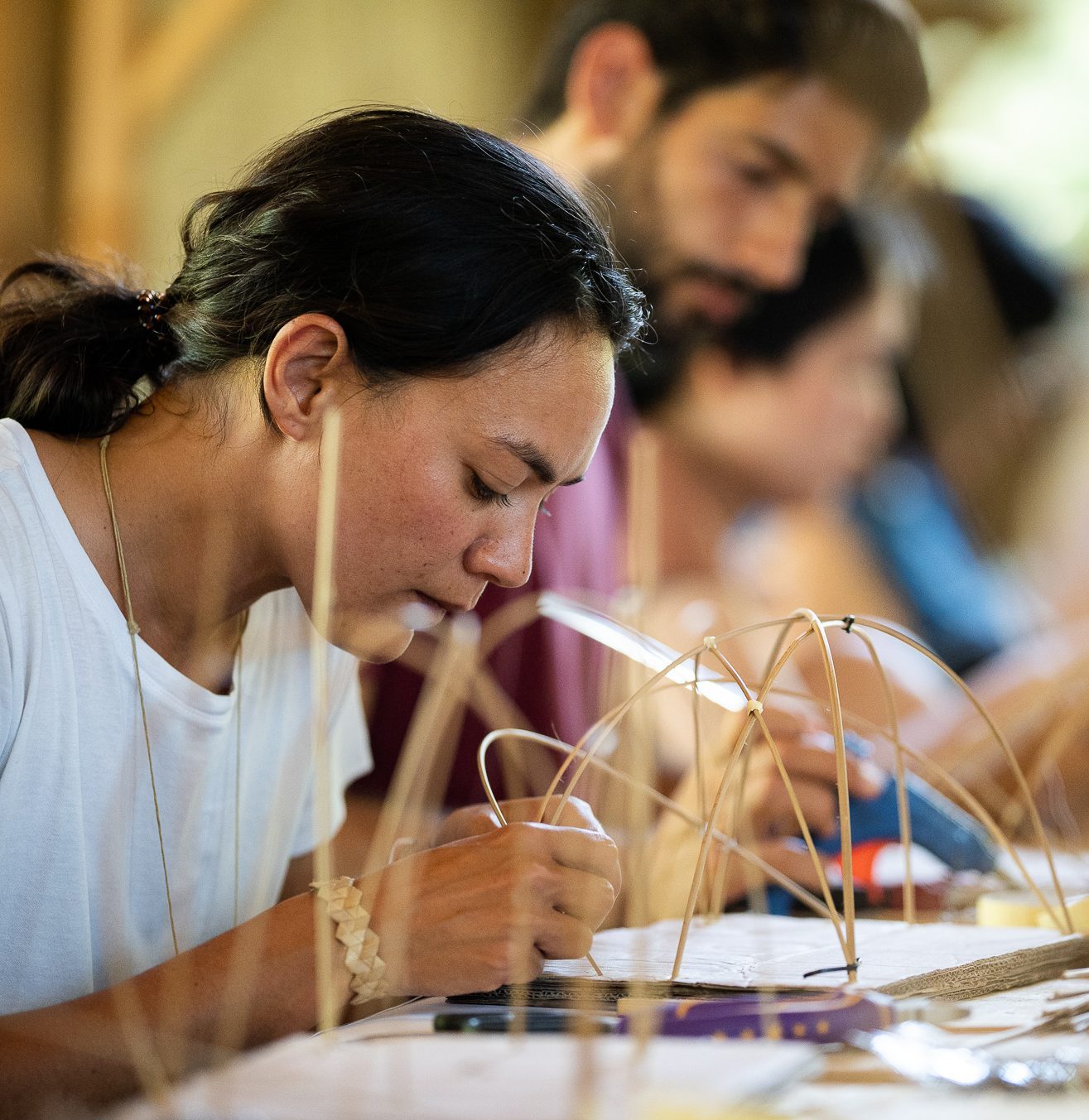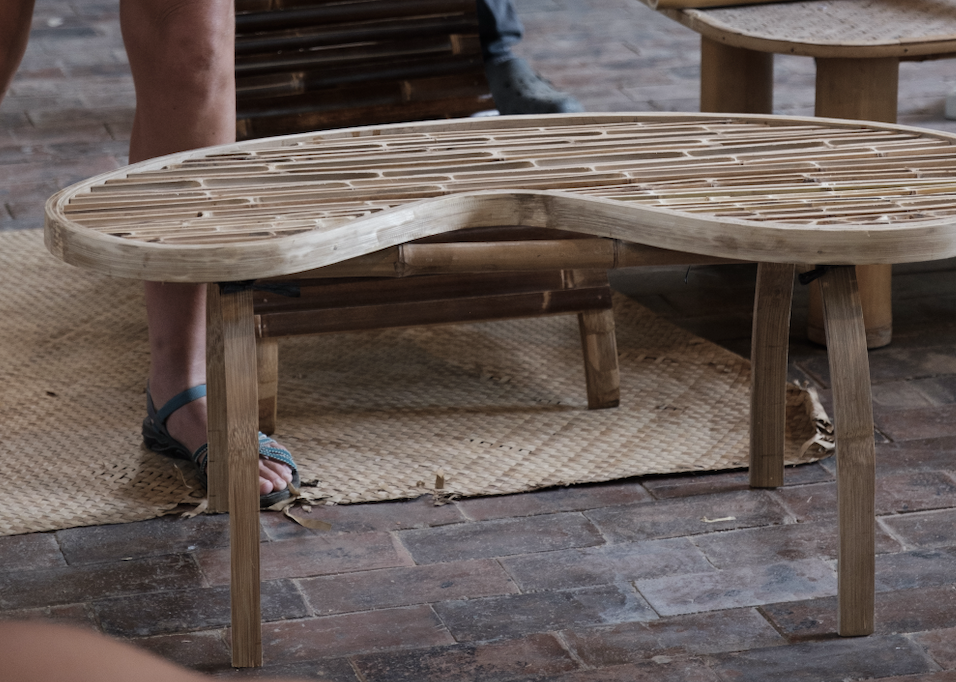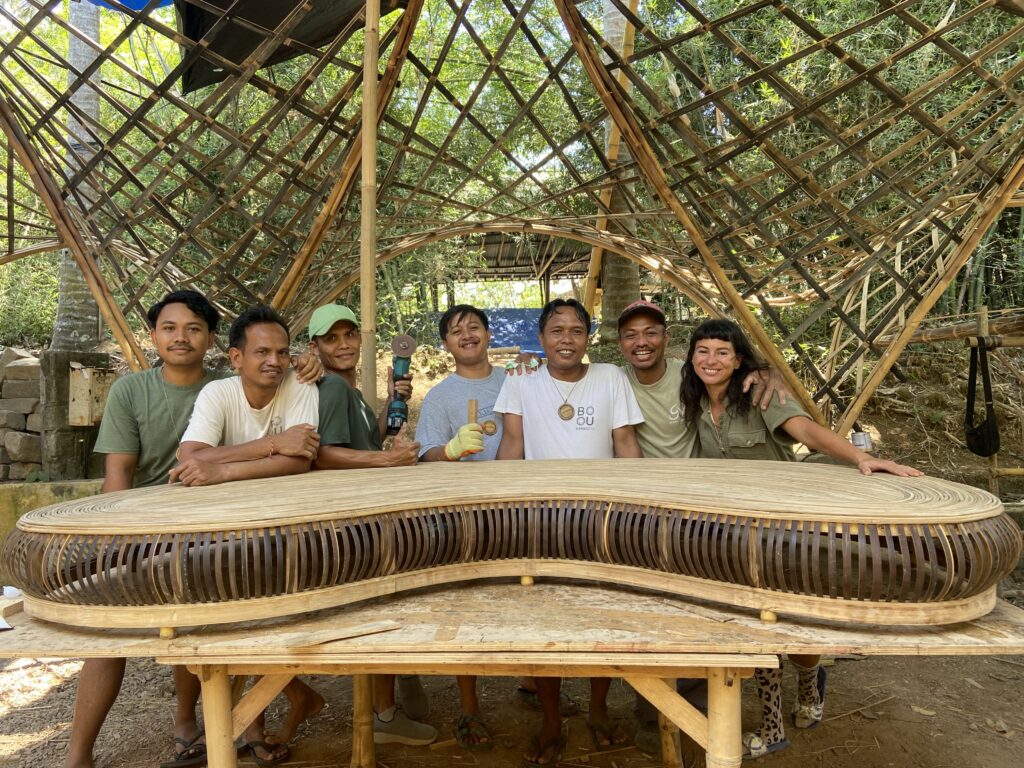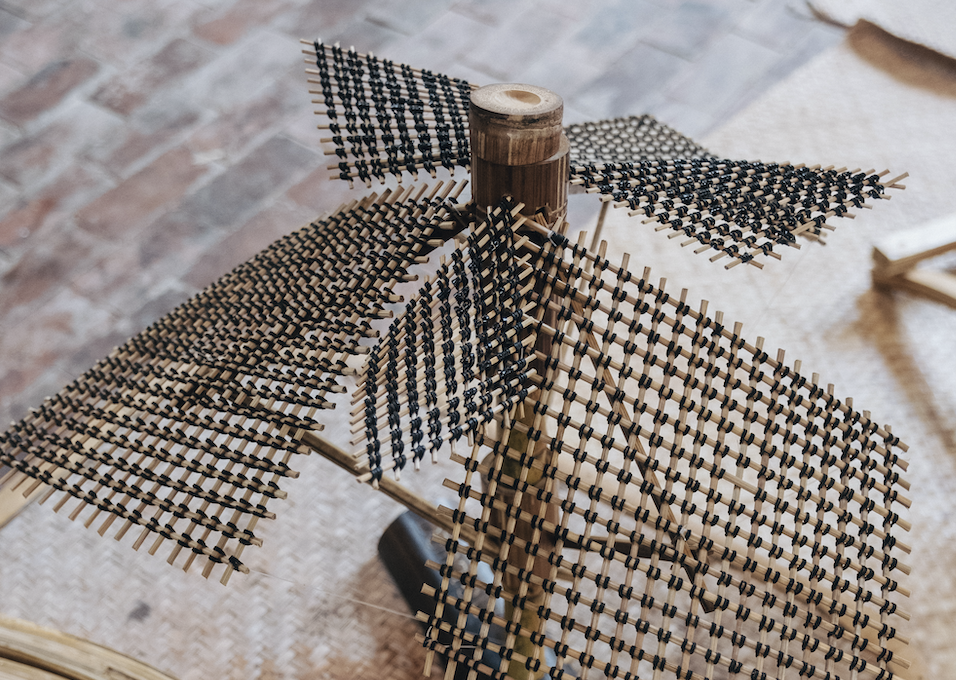UWA School of Design at Bamboo U
By Rosangela Tenorio | December 14, 2022 | Design - Alumni - Construction - Projects -
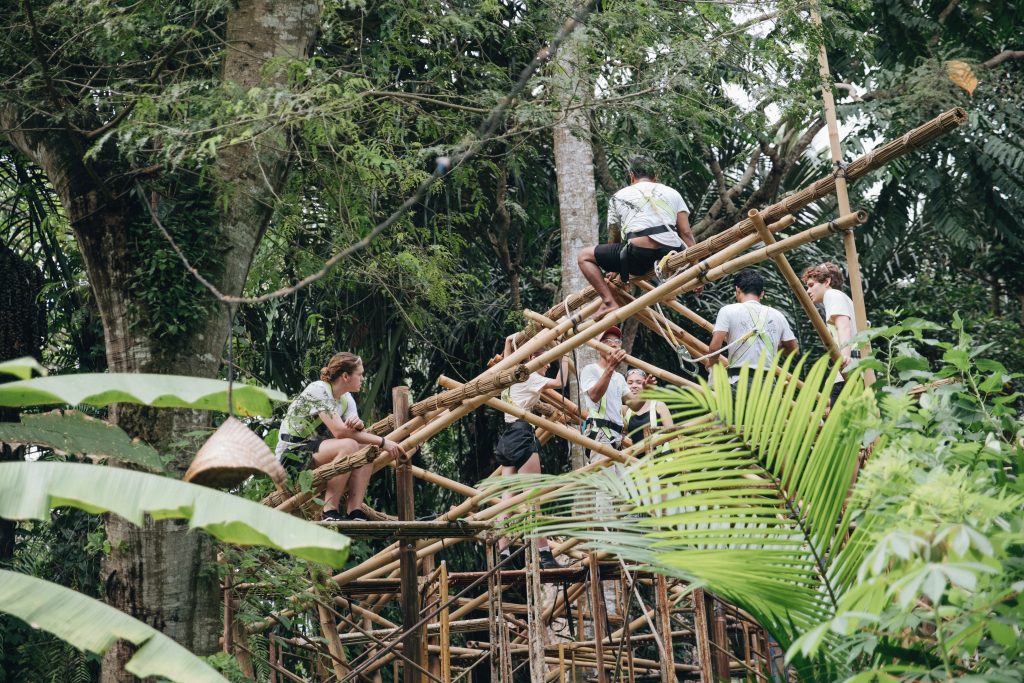
Hear from Dr. Rosangela Tenorio an Associate Professor at the University of Western Australia School of Design about why and how she brought 2nd and 3rd-year architecture students to Bali to join Bamboo U.
Last October we were joined by 18 students from the University of Western Australia for 11 days to immerse in designing and building with bamboo on the Bamboo U Campus. The course was part of an accredited program that the University offers. In this article, we speak to Dr. Rosangela Tenorio, to hear about her experience joining the course and why she feels this to be an important part of undergraduate and postgraduate education.
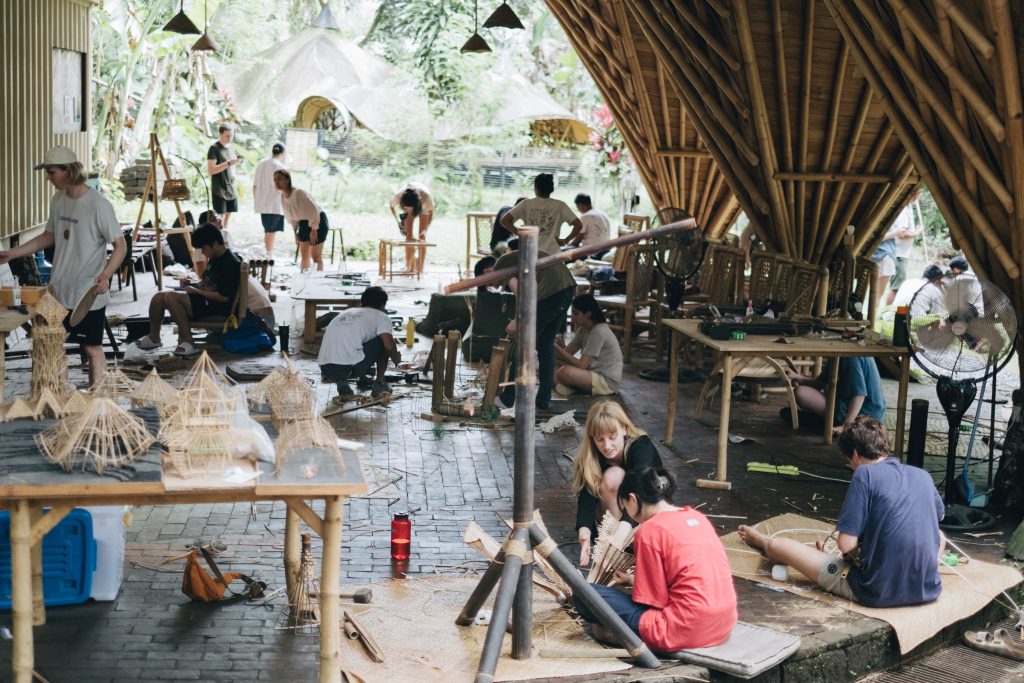
An Interview between Associate Professor, Dr. Rosangela Tenorio and Maria Farrugia, Co-Founder of Bamboo U.
Why did you join Bamboo U? and How do you think joining a program like this might impact a student's learning and career? (Maria)
I myself attended the Bamboo U course back in 2018 as a student in a public course, and the purpose was to check the feasibility of making the practical knowledge and expertise offered at Bamboo U linked to our accredited architecture teaching program.
Since 2019, with another colleague, I have founded the Bio-Based Materials Lab, and we have been introducing experimentation through teaching at UWA School of Design courses at the Masters's level [e.g. strawbale, bamboo, mycelium], but nothing was available for undergraduate students.
We have managed to get the support of the Australian Government, through the New Colombo Plan Award [NCP], and this undergraduate offering became a possibility.

Now, after this successful collaboration with Bamboo U, this will be an offering for our students as a Vertical Hybrid Studio, offered face to face in Bali on the Bamboo U campus and in a hybrid mode with additional work integrated learning students in Perth and in Timor-Leste.
Architecture and Landscape Architecture students have very intensive training, with many requirements to be fulfilled as part of their 3+2 years of training. Universities and accreditation bodies have obligations to the public to provide professionals in the market that understand and are aware of all regulations and are ready to comply with the quality and safety standards required. On top of that, the duty of care to our students, and the difficulties in providing a safe learning environment, make it much harder for staff to put in the extra work to get students out of the classrooms and experience the real contexts, and the real world, which is fundamental for their real learning as an architect and landscape architect.
Can you share a couple of highlights of the course? What was the biggest takeaway for you and for your group and how do you feel this might impact students' work in the world and their future? (Maria)
The course was extremely well organized, we have discussed the customization for quite a while, in particular in relation to timing and content, as it needs to fulfill not just the practical experiences that Bamboo U does so well, but it also needed to fulfill our own accreditation requirements.
I personally had my own expectations of what this course could mean for our students. Being 2nd and 3rd-year students, they have a lot ahead of them, until they leave the University grounds. It is important that they are able to question themselves, and their positions in this profession, so that they can be a solution to the problems that we are facing today in regard to our built environment, which is responsible for around 40% of our Co2 emissions.
It takes time to reflect on these issues, as it can become quite overwhelming when you think by yourself, somewhere in a classroom. As they came as a group, the time and the learning opportunities at Bamboo U all the time, were prone to such questioning, and I think it’s the tribe there and all the guests and the work that surrounds Bamboo U that is the most impressive.
Our students were exposed to all the different projects, the real buildings surrounding them, the history behind them, as well as the technical aspects of their making. They had the chance to ask questions, to discuss and disagree with motivations or rationales, to meet with those that made it possible, to see where the materials come from, and what’s made of it once the end of its lifetime arrives. This is a process that is priceless for a student. By finding faults in whatever parts of the process, which is absolutely normal, they can find a place where they themselves can work on a solution, and this is what we need in a community, on a planet committed to sustainable growth. We can’t do this alone.
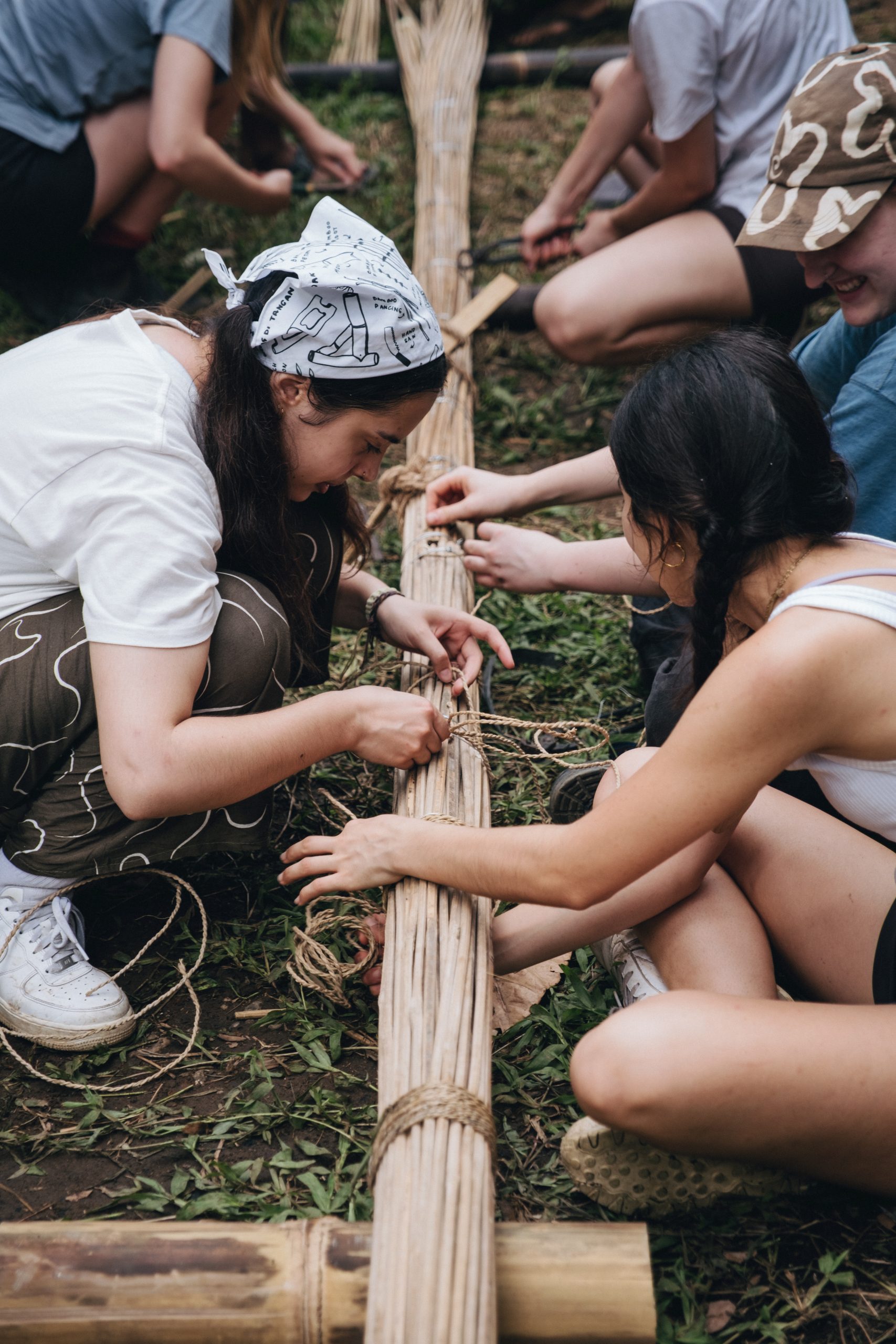

What did students create during the course? (Maria)
Students were tasked with three projects that were interconnected.
For the UWA School of Design, they had to design a small café. This is a project that the Bio-Based Materials Design Lab has developed some time ago, and the project is being developed.
This project was used during the initial phases, to get students into the design process using model making and drawings altogether. It is very hard to get students past their first year to use hand drawings or model making. The pressure in architecture offices to be proficient in all types of CAD tools, makes students stay away from these types of tools, which can be detrimental to their learning.
"A combination of skills [be it digital and physical model making and drawings] is an essential component of architecture training. With this in mind, they have embraced the process and it was very good to see their development. "
This process was accelerated and advanced, as they passed through the construction phase of a small kitchenette built for Bamboo U. We spent 5 days working on the full-scale construction, and in there, students learned the details, the process of making, transporting materials to its minute detail, from foundation to roofing.
As they returned to Perth, their small café has changed substantially, given their hands-on experience with bamboo, both on model making and on the construction site, they feel free to move from laptops, and digital models, to plans and elevations or sections and hand sketches. Their folio submission was due on Friday 9th December 2022, and I am impressed by the fluidity of their design process, and their attention to detail, facing without fear the resolution of joinery connections, that only my Master's students would be working on in other studio projects. Their confidence in researching, and finding a solution is really at high levels, as they feel confident they can find the answers, and they don’t need to know everything. "I’m not sure how to connect this,… but, Someone else might have done this detail before, and I will just need to find out how to adjust to my own solution,” said one student yesterday during our tutorials here in Perth."
So the Café model-making and the construction site were a great opportunity to advance their learning, and here in Perth, they are reflecting and advancing on how to improve their siting, considering other requirements, like privacy, levels on the site, structural aspects, that affect views, affordability and so forth. While also making use of different tools and skills to express their designs, for a wider audience.
The product design station was another activity they have done, and it was to design a lamp or a stool in 48 hours. We have done this sort of activity before here at the BBMLab with our Master students, using cardboard, mycelium, strawbale, hemp, and other materials. The students had time to think before on what they wanted to achieve.
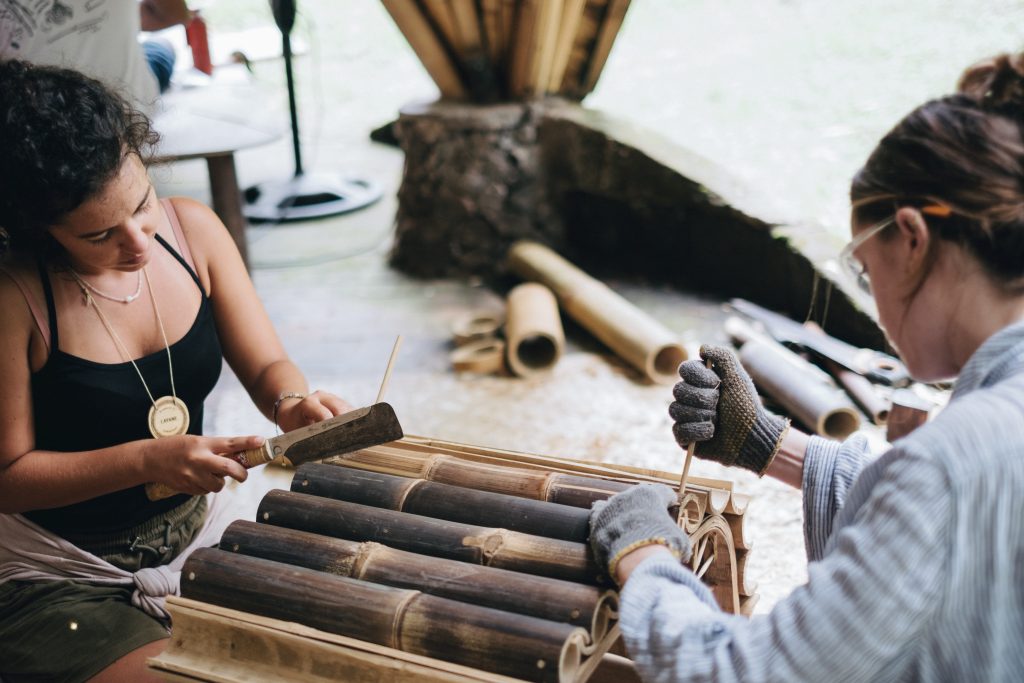
They were briefed by the Bamboo U team and received a demo session from the bamboo carpenters. They all went straight into fabrication, and the most impressive results came out. Very good for the first attempt at bamboo product design. Most of the bamboo stools and lamps had concepts derived from what bamboo can do, and the processes of making, which could reduce the uses of glues or laminated material and processing.
It was also one of the suggestions, that they could minimize the use of joinery that could require high levels of carpentry so that the products could be replicated by others that would not have this sort of skills. Some of the students used concepts like a design for disassembly [Lola’s camping stool] so that the products could be flat packed and dismantled as necessary for transport and ease of disposal. (Dr. Rosangela)
Do you have any advice for other professors or institutions that are wanting to bring students to learn about bamboo at Bamboo U? (Maria)
I think you need to come to Bamboo U first as a student. Try it yourself. I never put my students into any foreign program or anything outside of the ‘normal’ without trying it myself. We need to put ourselves into our students' shoes, and see the world through their lenses. By doing so, we also become receptive as they will to the knowledge that will be offered to them, and we can also be critical to it and build a unit/research project that can be suitable for all players involved.
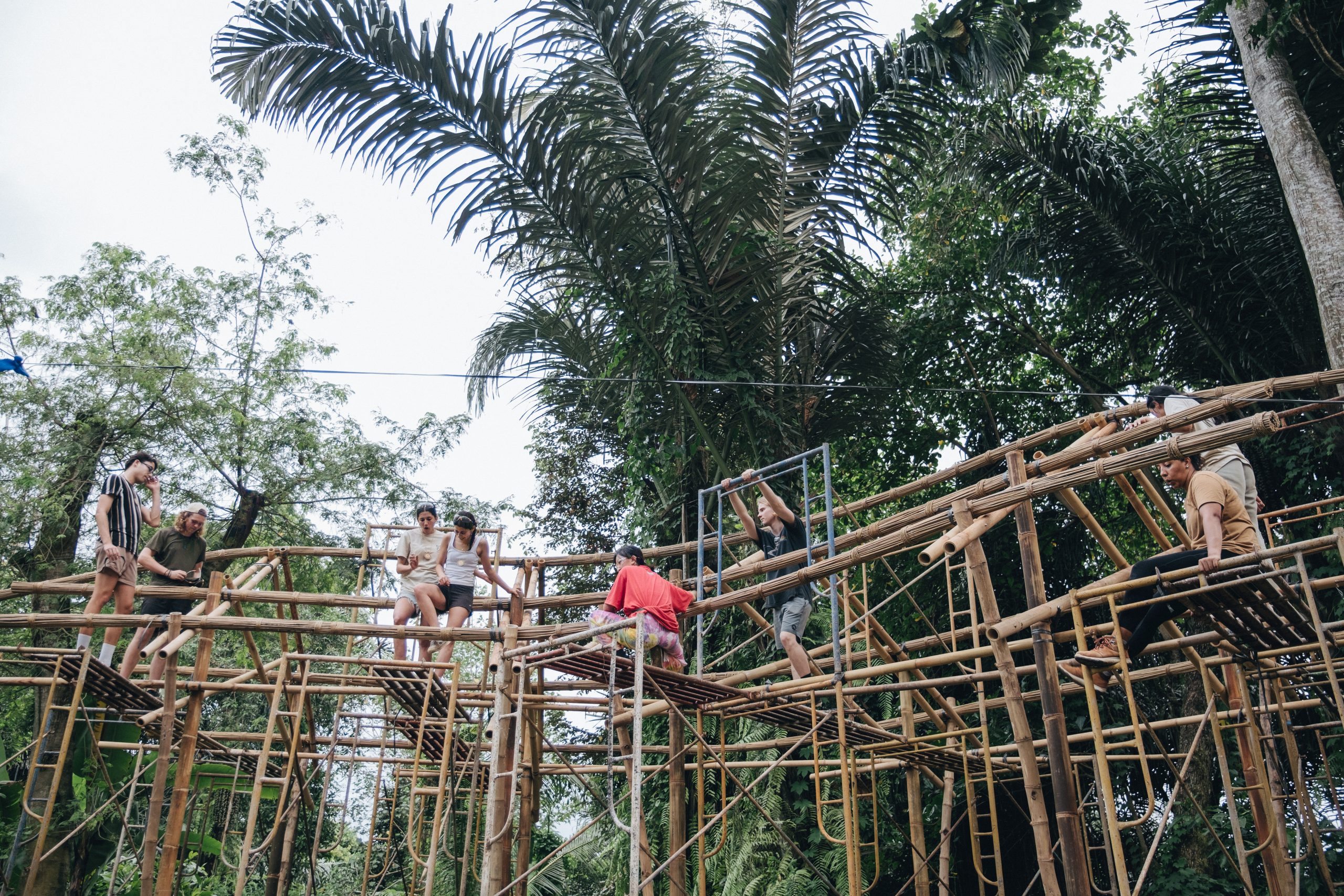
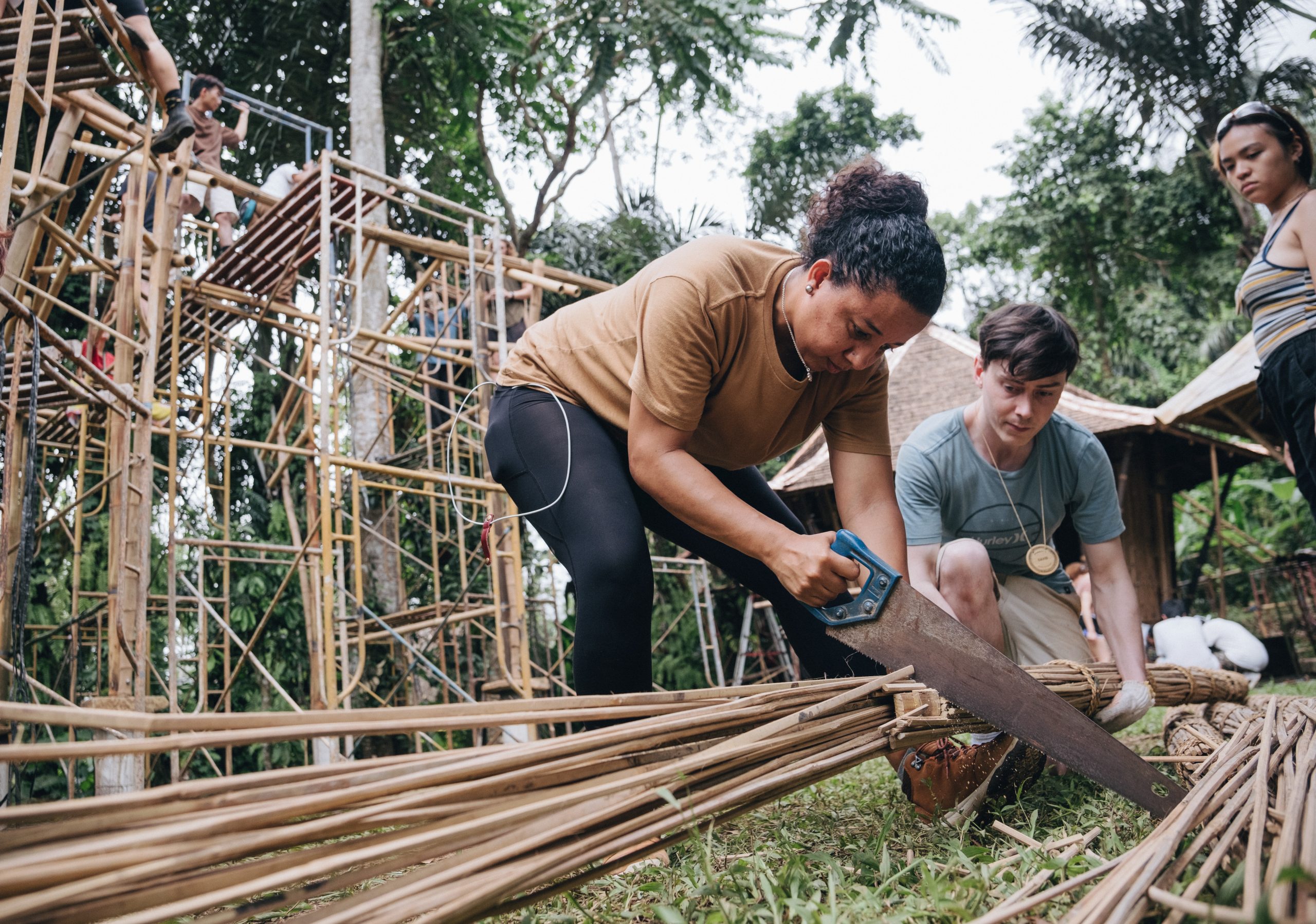
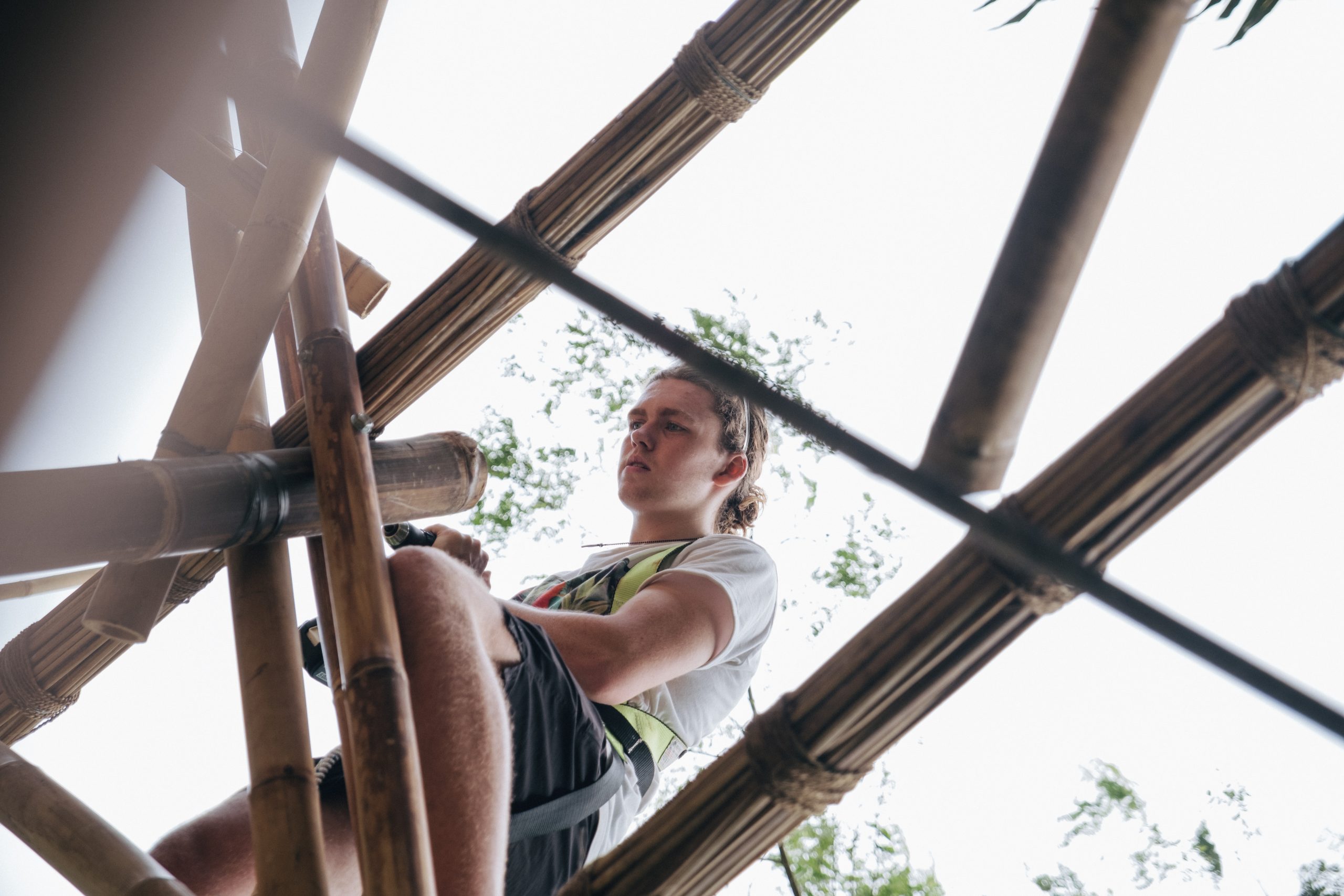
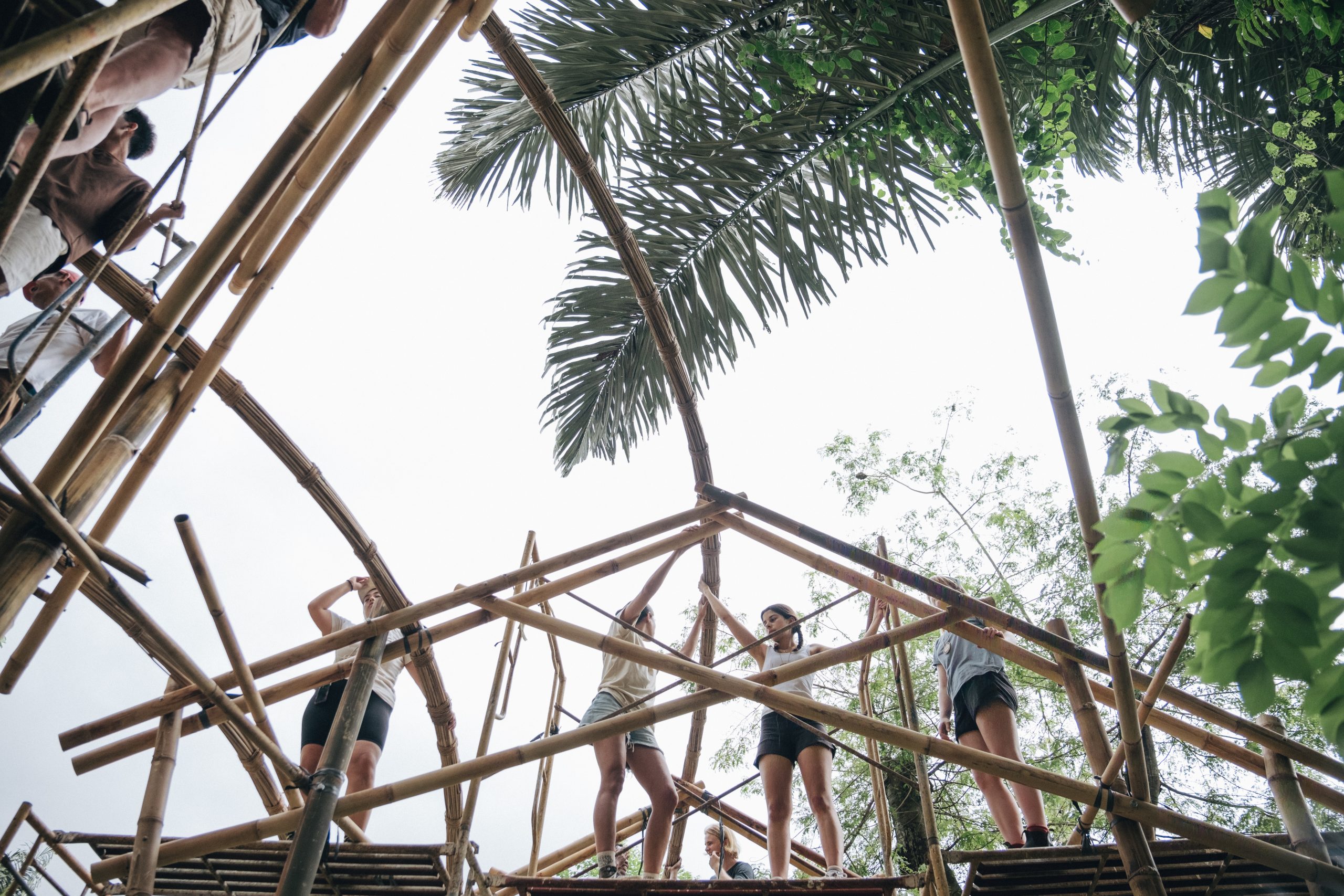
Bamboo U has been extremely consistent and open to our discussions and customization, and they are more than happy to work with you on your particular needs. I think we are the first Australian Architecture School to join them in a program that is part of our core accredited curriculum with an extremely successful outcome. We hope that many other universities in Australia and elsewhere follow.
Australia has a carbon footprint per capita of around 16 tonnes of CO2 per year. If everyone lived like Australians, we would need 5.2 planet earth to survive. Bamboo and all the countries that produce and live with bamboo, might not be teaching Australians how to build with bamboo as they experience, but potentially will be offering an alternative view on how to live sustainably on this planet from a social, economic, and environmental perspective. And if we can get architects to learn that from year 1, we are off to a behavioral transformation in our profession. (Dr. Rosangela)

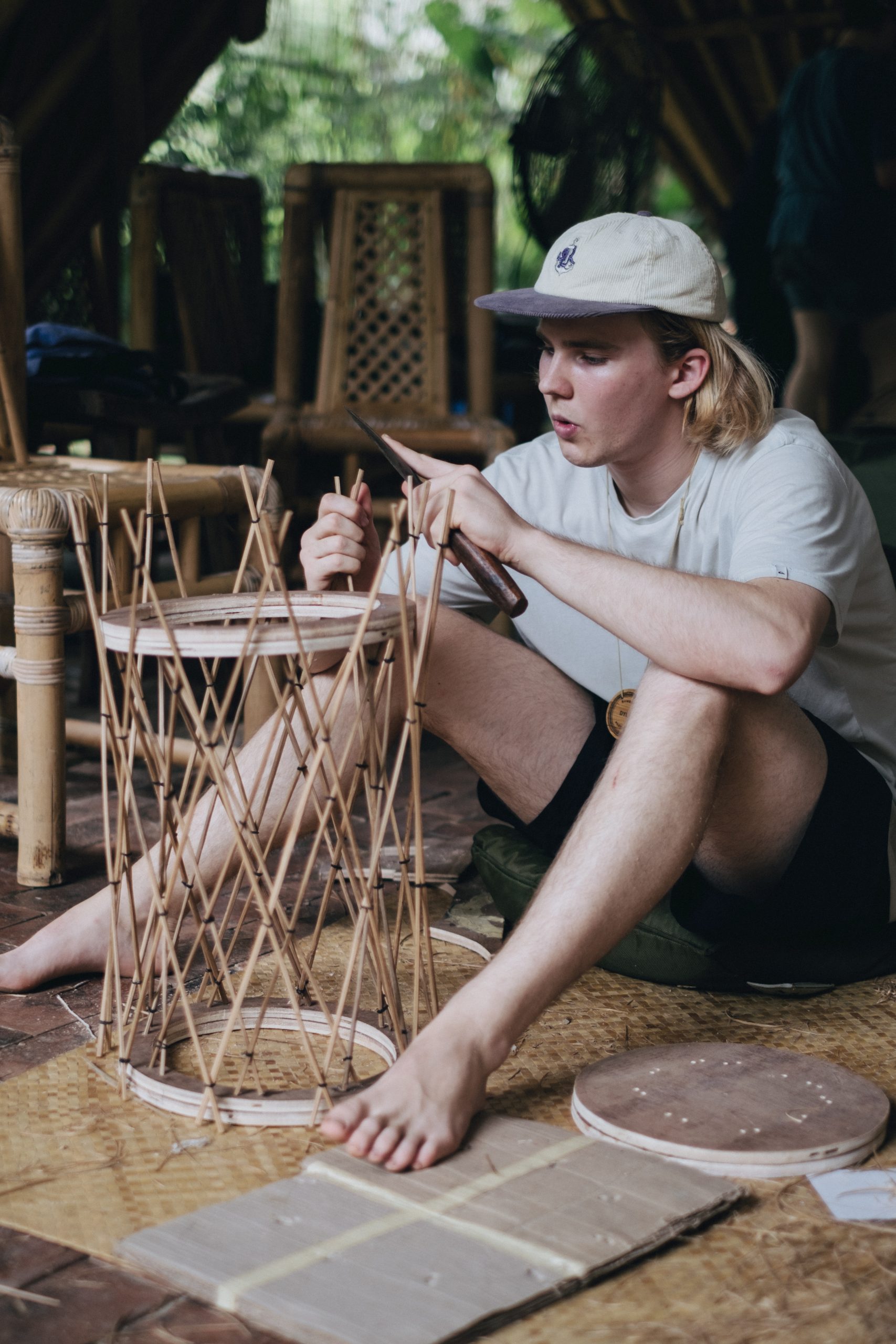
Is there anything else you would like to share? (Maria)
Thank you for having us! See you hopefully in July 2023 and beyond with more creativity and passion for design. (Dr. Rosangela)

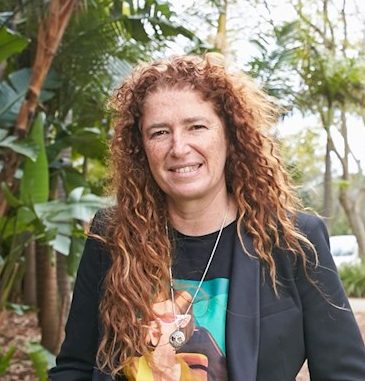
Dr. Rosangela Tenorio is an Associate Professor at the University of Western Australia School of Design with over 20 years of experience as an academic and a practicing architect. She is also a co-founder of the Bio-Based Materials DESIGN Lab at UWA
June 7-18, 2024
The 11 Day Bamboo Build & Design Course in Bali
In 11 days, we'll show you how to build bamboo structures we’ll share all that it takes to build with nature.
April 26, 2024
The Fundamentals of Building with Bamboo Online Course
All the fundamentals you need to get you started working with bamboo. Deep dive into cinematic videos and step-by-step guides that will provide you with a strong understanding of bamboo as a design and building material.











